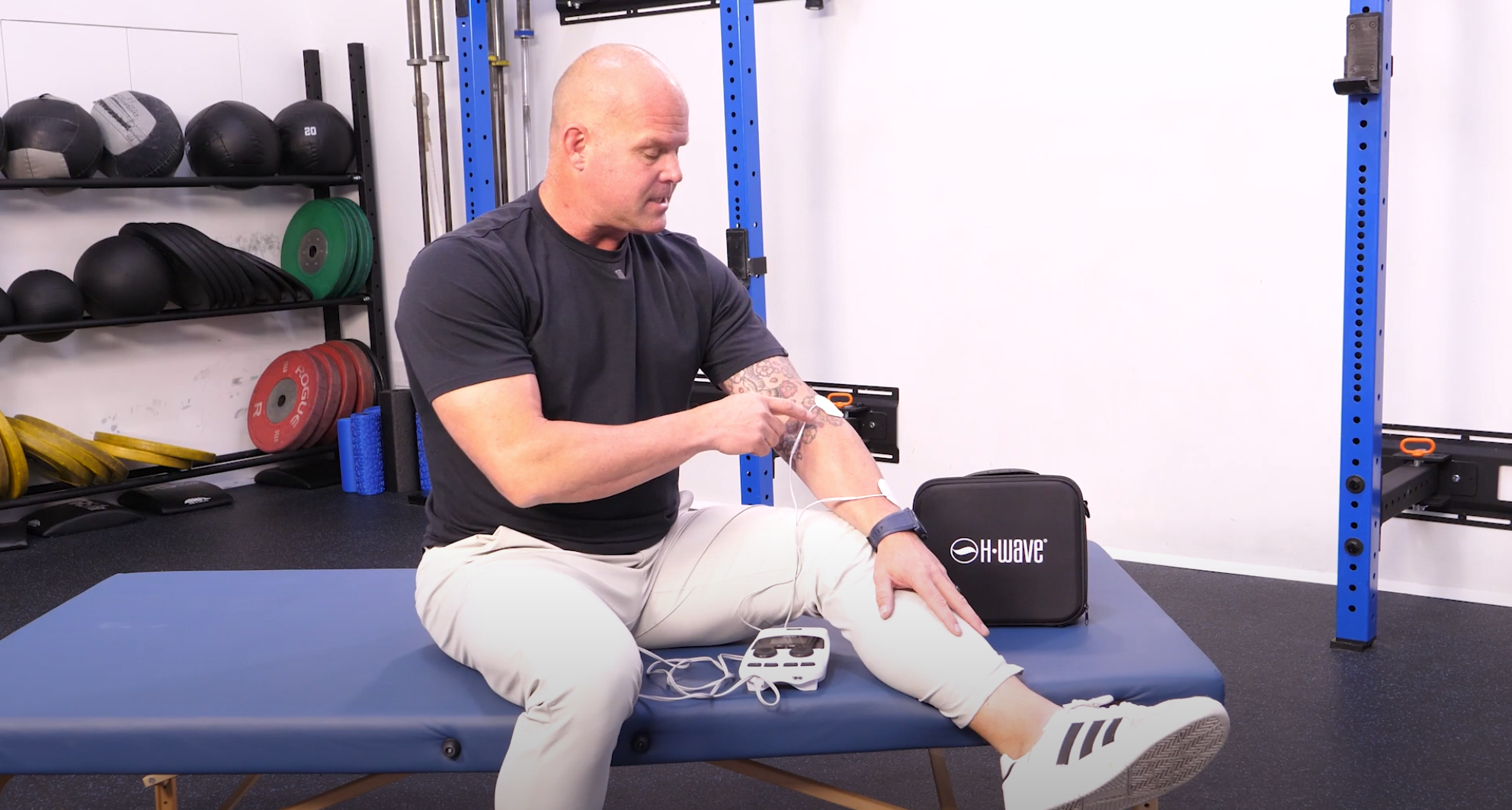Using Low Frequency for Acute Recovery and Long‑Term Care
At H‑Wave, we’re proud to work with world‑class professionals like Dr. Kelly Starrett from The Ready State and a leading authority on movement, performance, and recovery. Dr. Starrett has integrated H‑Wave into his work with athletes for years – both during short‑term recovery after injury and for maintaining long‑term performance.
One of the most common questions we hear is whether it’s safe to use H‑Wave frequently and for extended periods. The short answer is yes, and consistent use is encouraged for the best results.
The Acute Phase: Staying Ahead Early
When athletes are dealing with physical setbacks, the priority is to keep affected muscles connected to the brain. Without this connection, muscles can lose function which will lead to creating a longer road back to optimal performance.
Using H‑Wave’s low frequency setting creates a comfortable, non‑fatiguing contraction that keeps tissues active without causing strain. This gentle pumping action promotes circulation, brings fresh blood to the area, and moves out excess fluid.
In the early stages, the goal is to use the use as much as you can for those who are committed to maximizing results. For most athletes, three sessions a day morning, midday, and evening can provide a significant advantage in maintaining tissue function and comfort. Addressing congestion proactively helps maintain performance capacity from the start rather than having to reclaim it later.
Consistent Benefits Over Time
Physical recovery is rarely linear. Even months after an injury, increased activity can trigger discomfort and fluid retention.
H‑Wave remains just as effective months down the line as it does in the initial stages. When activity levels rise or tissues are challenged, low frequency H‑Wave sessions can be used immediately to restore comfort and maintain movement quality.
Athletes often transition out of structured rehabilitation without a clear plan for ongoing care. H‑Wave provides a strategy for long‑term management, ensuring that performance goals remain within reach and setbacks are minimized. It’s easy to use, portable and provides the on-demand relief you need.
Protecting Neuromuscular Connection
An additional benefit of regular low frequency use is the protection of the brain‑to‑muscle connection. Maintaining gentle, consistent non-fatiguing contractions with H‑Wave helps preserve these pathways, reducing the need for intensive reactivation efforts later.
This approach prevents the cycle of muscle inhibition and reactivation, allowing you to maintain consistent performance without repeated setbacks.
Dr. Starrett’s Playbook for H‑Wave Use:
- Acute Phase:
- Goal: Keep tissues active, promote circulation, and address congestion early.
- Frequency: At least three low frequency sessions daily, or up to 20 hours per day for highly committed users.
- Long‑Term Phase:
- Goal: Maintain tissue quality, comfort, and neuromuscular connections.
- Frequency: Daily for some athletes, or as needed following intense training or competition.
For Dr. Kelly Starrett and The Ready State, H‑Wave’s low frequency setting is a cornerstone of both acute and long‑term care. From preserving muscle engagement in the early stages to providing consistent, reliable results months later, H‑Wave continues to deliver benefits without losing its effectiveness over time.
Whether the goal is short‑term recovery or sustained high performance, low frequency H‑Wave helps keep athletes moving, comfortable, and connected every step of the way.
Watch the full video here to learn more:
